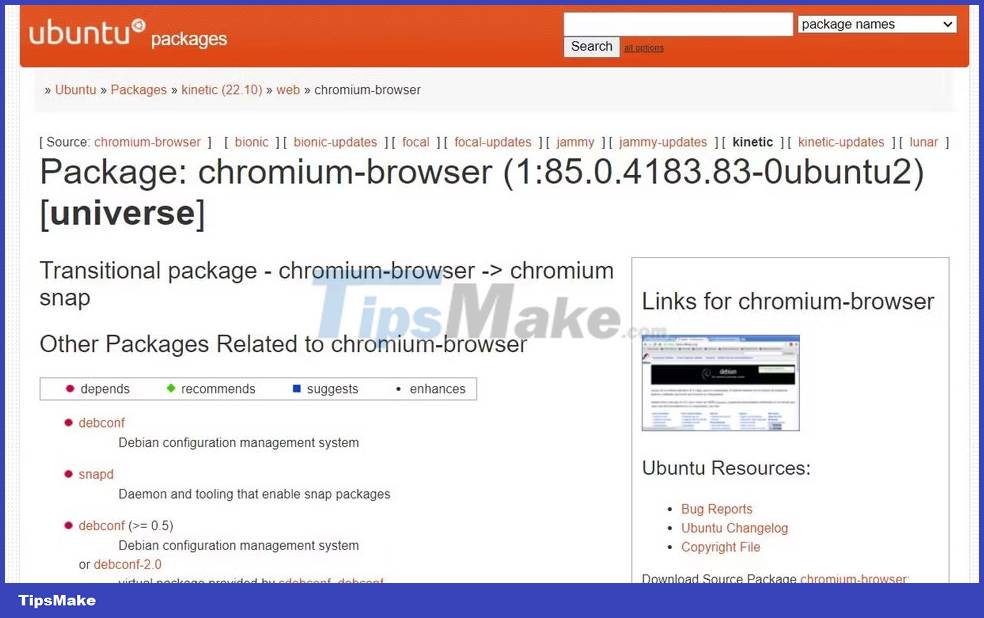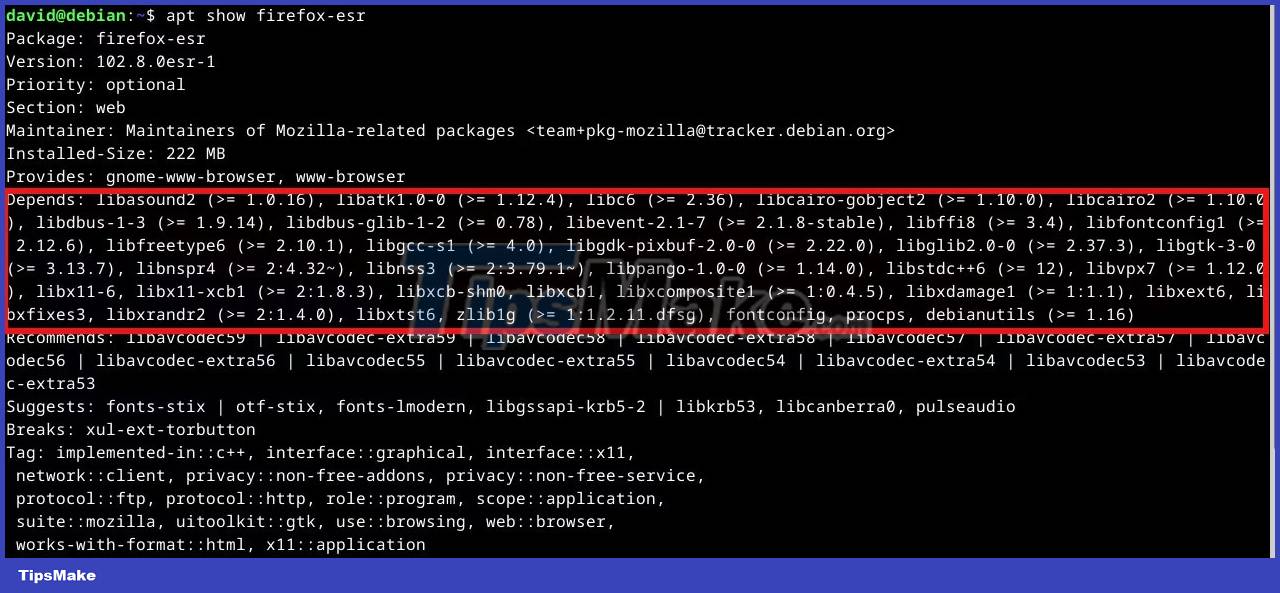What is a package dependency in Linux?
Let's learn about Linux dependencies and their impact on Linux package management.
Linux programs are created from building blocks of software

Linux dependencies are simply things a program needs to run. This is because Linux developers tend to write programs in a modular way, similar to the 'Unix philosophy' of building programs from smaller components.
Dependency are usually shared libraries. They can be for things like accessing databases, using network protocols, or drawing graphical elements on the screen. While proprietary programs also use shared libraries, that's easier to do in the Linux world because they're also often open source.
Dependency can also be complete program. A common pattern in the Linux world is to build a GUI user interface for an existing command line program.
Using shared libraries makes development easier because developers don't have to come up with new ways to do things every time they want to create a new application.
How Package Managers Make Linux Software Installation Easier
You can download the source code from the open source program's website and try to compile it yourself, but you'll often see something missing. This is because these projects don't include any dependencies with their program, assuming you have them installed or are willing to do so.
This worked well in the early days of Unix, running on mini PCs and mainframes with dedicated admin teams, but as Linux started to gain popularity on PCs, the old way was hard to manage for those who didn't. Single user may not have much Unix experience.
Linux distributions are starting to include package management tools that keep track of dependencies, download them over the Internet, and install and update them when a new version is available.
Flatpak and Snap are the latest efforts to manage dependencies by making them available through an application. This way, dependencies and applications can be better synchronized. Developers have more control over how the app will behave when it gets to users.
How to view package dependencies on Linux
The Linux distro package sites can show any package dependency. You can also see what dependencies a package has using the package manager.
On Debian or Ubuntu, use APT:
apt show [packagename] 
On Arch, use pacman with the -Si option. The Depends on section will display the dependencies.
pacman -Si [packagename] 
On Red Hat-based Linux distributions, use DNF:
dnf deplist [packagename] 
Dependency is not so mysterious on Linux. They show how Linux programs are built from smaller components. The package manager makes software installation easier by keeping track of packages.
It is also possible to see what dependencies the package has. They are also why you should update your package manager when installing new programs.
You should read it
- How to use winget - New Package Manager for Windows 10
- How to find out if the package is installed in Linux
- How to execute .run or .bin packages in Linux
- How to Install or Remove an RPM Package
- Chocolatey or Windows Package Manager is the better tool to download Windows software?
- Binary and Source Package: Which should be used?
- How to install Pip in Ubuntu
- Winstall.app - web-based GUI for Windows Package Manager only
May be interested
- How to install Pip in Ubuntu
 linux has a lot of package managers. ubuntu not only has apt but also many programming languages that come with its own package manager. pip stands for python packages packages and allows you to easily install packages from python package index (pypi).
linux has a lot of package managers. ubuntu not only has apt but also many programming languages that come with its own package manager. pip stands for python packages packages and allows you to easily install packages from python package index (pypi). - How to install Skye on Ubuntu
 there are actually several ways to install skype on linux. this article will show you how to install skype on ubuntu using the snap package or download directly from the microsoft website.
there are actually several ways to install skype on linux. this article will show you how to install skype on ubuntu using the snap package or download directly from the microsoft website. - How to Create DEB Packages for Debian and Ubuntu
 the deb file in debian-based operating systems like ubuntu and kali linux is equivalent to the exe file found in windows.
the deb file in debian-based operating systems like ubuntu and kali linux is equivalent to the exe file found in windows. - What is Gentoo Linux? How to install?
 gentoo linux is a powerful and scalable distribution that sticks to the original source-based package management mechanism.
gentoo linux is a powerful and scalable distribution that sticks to the original source-based package management mechanism. - Chocolatey or Windows Package Manager is the better tool to download Windows software?
 the package manager can make installing and configuring applications on windows very easy. like apt-get, homebrew or yum on linux and macos, you can use chocolatey or windows package manager (winget) on windows 10 and 11.
the package manager can make installing and configuring applications on windows very easy. like apt-get, homebrew or yum on linux and macos, you can use chocolatey or windows package manager (winget) on windows 10 and 11. - NPM in Node.js
 provides utilities to install node.js packages, version management and dependency management of packages in node.js.
provides utilities to install node.js packages, version management and dependency management of packages in node.js. - Instructions for registering V90 package is only 90k to receive the super 3-in-1 integration right away
 v90 viettel package has just been officially launched, creating a hot fever for all subscribers who are using the service of the network because of too great incentives to have any promotion packages that match at the present time.
v90 viettel package has just been officially launched, creating a hot fever for all subscribers who are using the service of the network because of too great incentives to have any promotion packages that match at the present time. - Package in Python
 we will learn how to divide code into efficient, clear modules, using python packages. plus, the way to import and use your own package, or the package you download from somewhere into the python program.
we will learn how to divide code into efficient, clear modules, using python packages. plus, the way to import and use your own package, or the package you download from somewhere into the python program. - How to Install and Use Homebrew on Linux
 although different linux distributions come with their own package managers, you will need homebrew on your system if you want to install programs that are not available in the default linux distro repositories.
although different linux distributions come with their own package managers, you will need homebrew on your system if you want to install programs that are not available in the default linux distro repositories. - How to check Internet package network FPT, VNPT, Viettel are using
 regularly checking internet network packages fpt, vnpt, viettel are using the following ways to make it easier for you to monitor internet connection speed, and if you encounter any problems, you can contact immediately network operators to ensure that the line is always stable, without affecting your work or leisure time.
regularly checking internet network packages fpt, vnpt, viettel are using the following ways to make it easier for you to monitor internet connection speed, and if you encounter any problems, you can contact immediately network operators to ensure that the line is always stable, without affecting your work or leisure time.










 How to Create an ARM-Based Linux Virtual Machine with Azure
How to Create an ARM-Based Linux Virtual Machine with Azure How to view hidden files and folders on Linux
How to view hidden files and folders on Linux How to configure static IP address on Ubuntu 22.04 LTS and 22.10
How to configure static IP address on Ubuntu 22.04 LTS and 22.10 How to install desktop/GUI environment in Ubuntu Server
How to install desktop/GUI environment in Ubuntu Server How to Install Nessus on Kali Linux
How to Install Nessus on Kali Linux